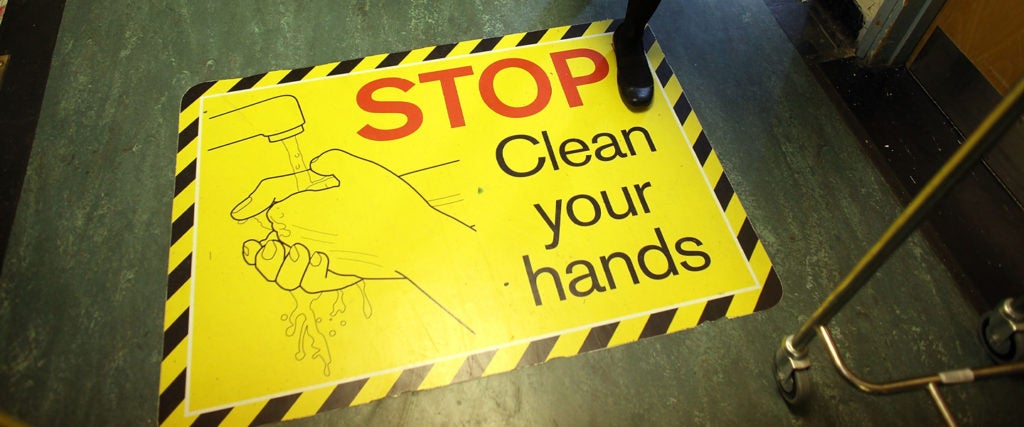By this point, we know that Americans have wildly different strategies, shall we say, when it comes to navigating a world gripped by a deadly airborne virus. Some are careful, avoiding virtually any proximity to someone outside their household; others see no issue in attending an indoor political rally with a few thousand largely maskless attendees. Many people fall into the middle of this spectrum — they manage risk as best they can while trying to approximate their usual routines. But their precautions can also lend a false sense of safety. Hand sanitizer, for example, will not help you avoid COVID-19 exposure during spin class in an unventilated room.
Six feet is not enough. Now at 44 primary cases + 17 secondary. The gym did health screening, cleaning, masks before and after class, 50% capacity, and 6' around each bike. NOTHING ABOUT VENTILATION. https://t.co/jyUx0nniEP
— Linsey Marr (@linseymarr) October 14, 2020
A fixation on scrubbing and disinfecting surfaces, which are not a primary vector of transmission for coronavirus, has turned into a ritual, largely unhelpful performance that The Atlantic’s Derek Thompson has labeled “hygiene theater.” It’s the kind of thing that allowed places like Disney World to reopen — along with that spin studio in Canada. But, crucially, Disney also enforces one of the strictest mask rules anywhere: “Neck gaiters, open-chin triangle bandanas and face coverings containing valves, mesh material or holes of any kind are not acceptable face coverings.” Between their new safety protocols, outdoor settings and reduced attendance, they’ve recorded no outbreaks, despite dire warnings this summer. At those spin classes, however, a whole suite of health guidelines was evidently undone by one incredible failure of common sense — participants did not wear their masks while exercising in a close group.
This is really exasperating. Masks off is not "doing everything right." The virus is airborne, and huffing and puffing in enclosed spaces with inadequate ventilation will absolutely get it into your lungs. https://t.co/hfzByieu8P pic.twitter.com/7m2xiKOaSM
— Heidi N. Moore (@moorehn) October 16, 2020
This speaks directly to Thompson’s argument: You can’t do everything but the essential thing and expect the virus to be contained, and leading customers to believe otherwise has painful consequences. Moreover, as University of Toronto epidemiologist Colin Furness told the Toronto Star, there’s really no acceptable way to reopen “inherently dangerous” businesses like indoor gyms and bars; hygiene theater in these environments provides only the illusion of stemming contagion.
Yet a growing resistance to antiseptic measures taken as superfluous, symbolic or useless has created a strange alliance between those vigilant on the virus and its most dogged skeptics. Both groups mocked the dividers for the vice presidential debate, although for separate reasons — either this was fear-mongering hysteria, or it was a laughable attempt at protection.
Read @apoorva_nyc on the lameness of the VP debate Plexiglas. She reports that a box fan duct taped to a filter would be far safer. https://t.co/zG76WhDbJV pic.twitter.com/7y57SrVzu2
— Margot Sanger-Katz (@sangerkatz) October 7, 2020
From a scientific standpoint, the glass is a silly idea. Does that mean it has no illustrative value? What about when Jaime Harrison, who is challenging Senator Lindsey Graham in South Carolina, showed up to a debate with his own barrier after Graham refused to be tested for coronavirus, thereby emphasizing the senator’s recklessness and disdain for public health? Probably the greatest hurdle we’ve faced in 2020 is getting a misinformed population to appreciate an invisible threat (not to mention its asymptomatic spread). We can’t fully discount the visible props and behaviors that, although ceremonial, help us stay aware and alert. Of course, as every superspreader event has shown, there can be no adequate substitute for social distancing, handwashing and masks. That doesn’t mean restaurants deceive diners by using a few more Clorox wipes, nor does it mean you have to give your anxious friend a hard time for habits you find excessive, whether it’s frequent testing or sticking to rigorous quarantine rules.
Biden also appears to be double-masking it at his campaign event in Las Vegas, an N95 underneath a surgical mask pic.twitter.com/vNs740SLW0
— Johnny Verhovek (@JTHVerhovek) October 9, 2020
Folks— *DOUBLE MASKING* could be the safer way to go. Biden used a surgical + N95, while I used a KN95 + KF94 (South Korea ?? made). Not only do each offer better filtration than cloth mask, but also in case one is a fake knockoff (lots fake KN95s) and saves mask longer. #COVID19 pic.twitter.com/ekgJ1GcXdm
— Eric Feigl-Ding (@DrEricDing) October 14, 2020
For better or for worse, there will always be a demonstrative element to managing a global crisis. Just as individuals should try to reduce their plastic usage despite the blame for this pollution falling squarely on corporations, leaders and citizens alike can signal the seriousness of the pandemic by doing whatever is in their power to curb infections, even if some of it is mainly for peace of mind. Whatever its efficacy, I’m good with Biden double-masking, because it shows us — however comfortable we may have gotten in this ongoing hell — that the fight is far from over, and the temptation to let our guard down is precisely what’s kept us caught in the cycle of falling-then-rising case numbers. When an attitude of “better safe than sorry” can save a life, there’s no shame in a little theater on top of the baseline CDC recommendations.
Everything in this country seems to depend on that kind of performance, in fact. Make it big, bright, loud and unavoidable, in starker contrast to the laissez-faire approach of the denialists who inevitably get sick. Forget subtlety — the important messages deserve to be underlined.

